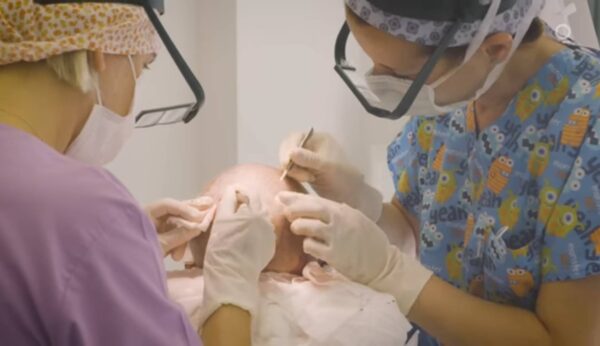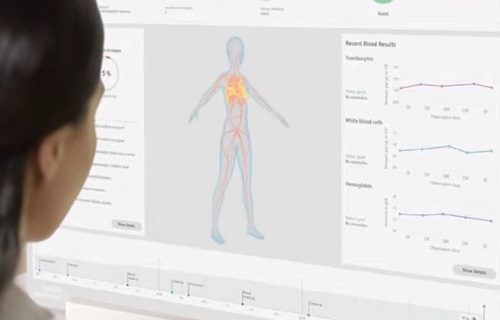What is the Blood Sugar?
Blood sugar is the amount of glucose (a type of sugar) in your blood. Glucose comes from the food you eat and is your body’s main source of energy.
In simple terms:
- Blood sugar = energy fuel in your blood.
- It needs to be in a normal range — not too high or too low.
- The body uses a hormone called insulin to control it.
Too much or too little blood sugar can cause health problems like diabetes or hypoglycemia.
🩸 Blood Sugar & Health Statistics (2024)
🌍 Global Diabetes Overview
- 537 million adults (20–79) are living with diabetes globally (10.5% of adults).
- By 2045, this is expected to reach 783 million (a 46% increase).
- Type 2 diabetes accounts for over 90% of all diabetes cases.
- Nearly 1 in 2 (approx. 240 million) people with diabetes are undiagnosed.
- 3 in 4 people with diabetes live in low- and middle-income countries.
🇺🇸 United States (CDC, 2023):
- 38.4 million people have diabetes (11.6% of the U.S. population).
- 29.7 million are diagnosed; 8.7 million (22.7%) are undiagnosed.
- 96 million U.S. adults have prediabetes (38% of adults).
- Only 19% of people with prediabetes know they have it.
🔻 Hypoglycemia (Low Blood Sugar)
- Common in Type 1 diabetes, especially those using insulin.
- Around 2 episodes per week of mild hypoglycemia in insulin-treated patients.
- Severe hypoglycemia occurs in up to 40% of insulin-treated patients annually.
⚠️ Complications from High Blood Sugar
- Cardiovascular disease: Leading cause of death in diabetics — 2–4x higher risk.
- Kidney disease (diabetic nephropathy) affects 30–40% of diabetics.
- Diabetic retinopathy (eye damage): affects 1 in 3 people with diabetes.
- Nerve damage (neuropathy): affects ~50% of people with long-term diabetes.
- Diabetes-related amputations: >1 million lower limb amputations yearly worldwide.
👶 Gestational Diabetes (in Pregnancy):
- Affects 1 in 6 pregnancies worldwide.
- Increases the risk of developing Type 2 diabetes later in life.
💸 Economic Impact
- Global health expenditure on diabetes (2021): $966 billion USD.
- That’s a 316% increase over the past 15 years.
- Diabetes accounts for around 11.5% of total global health spending.
What Are The Early Signs of Blood Sugar Disorders?
🔺 Early Signs of High Blood Sugar (Hyperglycemia)
These may appear gradually:
- Frequent urination (especially at night)
- Excessive thirst
- Unusual hunger
- Blurred vision
- Fatigue or drowsiness
- Slow wound healing
- Unexplained weight loss (more common in type 1 diabetes)
- Dry mouth and skin
- Tingling or numbness in hands or feet
🔻 Early Signs of Low Blood Sugar (Hypoglycemia)
These can appear suddenly:
- Shakiness or trembling
- Sweating
- Irritability or mood changes
- Rapid heartbeat
- Dizziness or lightheadedness
- Hunger (sudden and intense)
- Blurred or double vision
- Headache
- Confusion or difficulty concentrating
- Pale skin
If not treated, severe hypoglycemia may cause:
- Loss of consciousness
- Seizures
- Coma
⚠️ When to See a Doctor
- If you experience these symptoms frequently
- If symptoms interfere with daily life
- If you have a family history of diabetes or metabolic issues
What Are The Treatment Options of Blood Sugar Disorders?
🔺 Treatment for High Blood Sugar (Hyperglycemia / Diabetes)
1. Lifestyle Changes
- Diet: Low in refined sugar and carbs; high in fiber and vegetables.
- Exercise: 30+ minutes daily (improves insulin sensitivity).
- Weight loss: Even a 5–10% reduction can improve blood sugar control.
2. Oral Medications
- Metformin – first-line treatment for Type 2 diabetes.
- Sulfonylureas – stimulate insulin production.
- SGLT2 inhibitors – help kidneys remove excess sugar.
- DPP-4 inhibitors – increase insulin after meals.
3. Insulin Therapy
- Required in Type 1 diabetes and often later in Type 2 diabetes.
- Various forms: rapid-acting, long-acting, mixed.
4. GLP-1 Receptor Agonists
- Help lower blood sugar and support weight loss.
- Examples: semaglutide (Ozempic), liraglutide (Victoza).
5. Monitoring
- Frequent blood glucose testing (finger prick or continuous glucose monitors).
- HbA1c tests (every 3–6 months to check long-term control).
6. Managing Complications
- Eye care, kidney monitoring, foot exams and heart health.
🔻 Treatment for Low Blood Sugar (Hypoglycemia)
1. Immediate Action
- 15–15 Rule: Eat 15g of fast-acting carbs, wait 15 minutes, recheck blood sugar.
- Examples: ½ cup juice, glucose tablets, 1 tbsp honey.
2. Glucagon Injection
- Emergency treatment if the person is unconscious or unable to swallow.
- Available as injection pens or nasal sprays (e.g., Baqsimi).
3. Adjust Medications
- If caused by too much insulin or oral meds, doses may need to be lowered.
4. Diet Management
- Eat frequent, balanced meals with complex carbs, protein and fiber.
- Avoid skipping meals or prolonged fasting.
5. Medical Supervision
- Frequent low blood sugar episodes need doctor review and possible changes in treatment.
🩺 Special Cases
| Condition | Treatment Notes |
|---|---|
| Gestational Diabetes | Diet, exercise, sometimes insulin; close monitoring during pregnancy |
| Prediabetes | Lifestyle changes (diet, weight loss, exercise); sometimes metformin |
| Type 1 Diabetes | Lifelong insulin therapy; carb counting; continuous glucose monitoring (CGM) |

Advices For Blood Sugar Disorders
🩺 1. Get Diagnosed and Understand Your Condition
- See a doctor if you suspect blood sugar problems (fatigue, frequent urination, thirst, blurred vision).
- Ask about HbA1c, fasting blood glucose and glucose tolerance tests.
- Know the type of blood sugar disorder you have:
- Type 1 Diabetes (autoimmune, needs insulin)
- Type 2 Diabetes (insulin resistance)
- Prediabetes
- Hypoglycemia (low blood sugar)
🥗 2. Follow a Balanced, Low-Glycemic Diet
- Avoid:
- Sugary drinks, white bread, pastries, processed snacks
- Large carbohydrate loads (especially refined carbs)
- Prefer:
- Whole grains, legumes, leafy greens, lean proteins, healthy fats
- Low-glycemic index fruits: berries, apples, citrus
- Portion control: Keep carbs consistent per meal.
- Eat regularly: Avoid long fasting, especially in hypoglycemia.
📌 Tip: A Mediterranean or DASH diet is often recommended for blood sugar and heart health.
🧘♀️ 3. Exercise Regularly
- Aim for at least 150 minutes/week of moderate activity (walking, swimming, cycling).
- Strength training 2–3 times/week helps improve insulin sensitivity.
- Movement after meals can blunt post-meal glucose spikes.
💊 4. Follow Your Medication Plan
- Type 1: Insulin therapy is essential.
- Type 2: Metformin is often first-line, but others may be added (GLP-1, SGLT2 inhibitors).
- Take medication as prescribed — never skip or adjust without your doctor.
📊 5. Monitor Your Blood Sugar
- Use a glucose meter or continuous glucose monitor (CGM) if recommended.
- Know your target range (varies by condition):
- Fasting: 70–99 mg/dL (normal), <130 mg/dL (in diabetes)
- After meals: <180 mg/dL (in diabetes)
- Track trends and share with your healthcare team.
🚫 6. Avoid Alcohol and Smoking
- Alcohol can cause dangerous blood sugar drops (especially if taking insulin).
- Smoking worsens insulin resistance and vascular damage.
🧠 7. Manage Stress
- Chronic stress raises cortisol → increases blood sugar.
- Practice relaxation: breathing exercises, meditation, nature walks.
- Ensure good sleep (7–9 hours/night).
📚 8. Stay Educated and Empowered
- Learn to read nutrition labels.
- Join a diabetes education program if available.
- Keep emergency snacks (like glucose tablets or juice) if prone to hypoglycemia.
👨⚕️ 9. Regular Medical Check-Ups
- Check HbA1c every 3–6 months.
- Annual screenings for:
- Eye health (retinopathy)
- Kidney function (urine albumin, GFR)
- Foot exams (neuropathy risk)
- Cholesterol and blood pressure
❤️ 10. Watch for Complications
- Symptoms like numbness, blurry vision, chest pain, wounds that don’t heal should be taken seriously.
- Early treatment prevents serious outcomes like stroke, blindness, amputation or kidney failure.
| Category | Advice | Details / Examples |
|---|---|---|
| 🩺 Diagnosis | Get tested and confirm the type | HbA1c, fasting glucose, oral glucose tolerance test; Type 1, Type 2, prediabetes, etc. |
| 🥗 Diet | Eat a low-glycemic, balanced diet | Whole grains, legumes, vegetables, healthy fats, avoid sugary drinks and refined carbs |
| Control portions & time your meals | Smaller, regular meals to avoid spikes or drops | |
| 🧘 Exercise | Aim for 150+ minutes/week of activity | Walking, cycling, swimming, strength training |
| 💊 Medication | Follow prescriptions exactly | Insulin (Type 1), Metformin, GLP-1 agonists, etc. (Type 2) |
| 📊 Monitoring | Track blood sugar regularly | Use glucometer or CGM; know your targets: fasting <130, post-meal <180 (for diabetics) |
| 🚫 Avoid Harmful Habits | Limit alcohol and quit smoking | Alcohol may cause hypoglycemia; smoking worsens insulin resistance |
| 🧠 Stress & Sleep | Manage stress and sleep 7–9 hours/night | Use breathing exercises, meditation, and sleep hygiene |
| 📚 Education | Learn and stay informed | Understand food labels, carb counting, join education programs |
| 👨⚕️ Medical Care | See your doctor regularly | HbA1c every 3–6 months; eye, kidney, foot checks annually |
| ⚠️ Watch for Symptoms | Report any unusual signs early | Numbness, blurry vision, slow-healing wounds, fatigue |
We wish a healthy and heappy life to you. You can find details one of the most common diseases: Pneumonia

